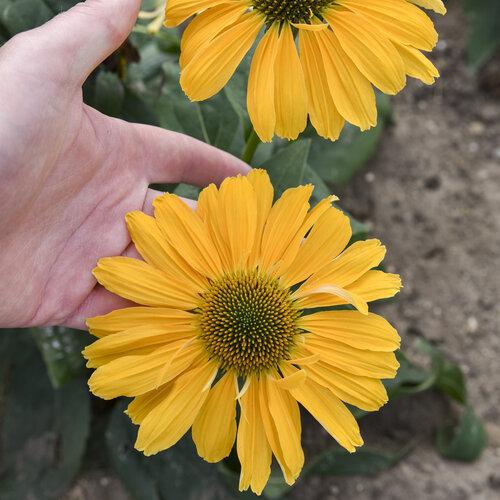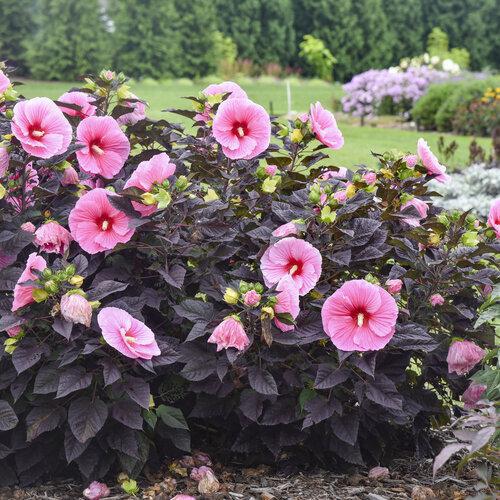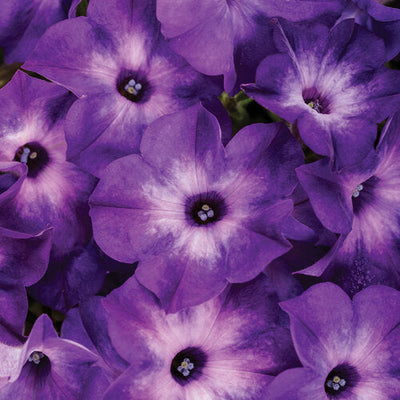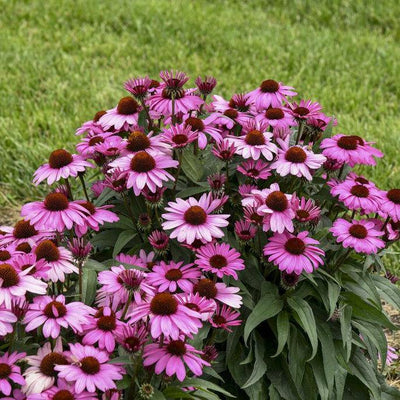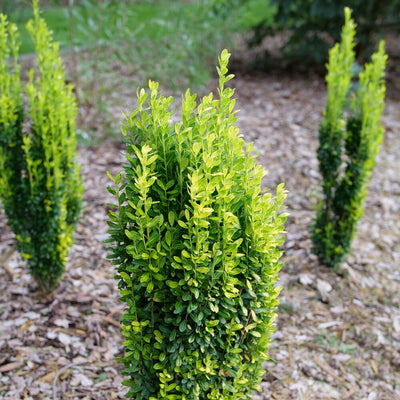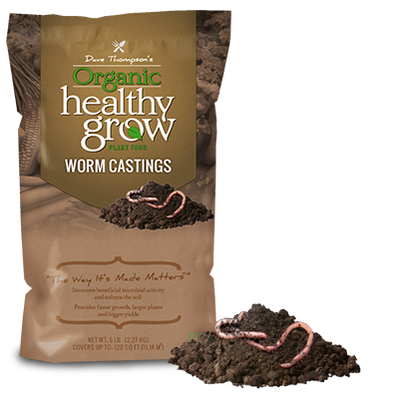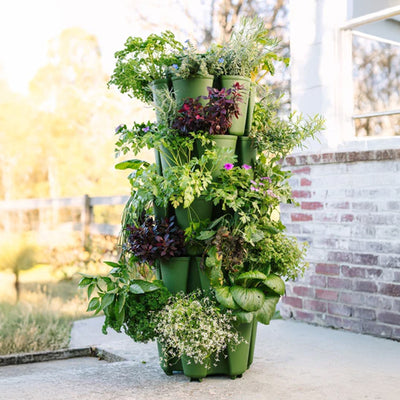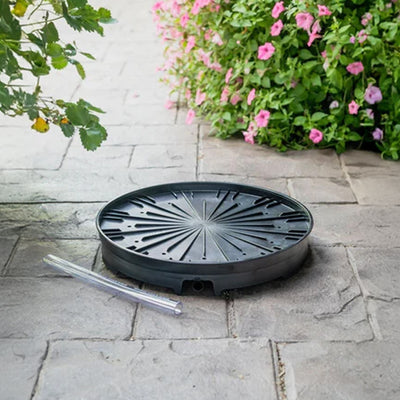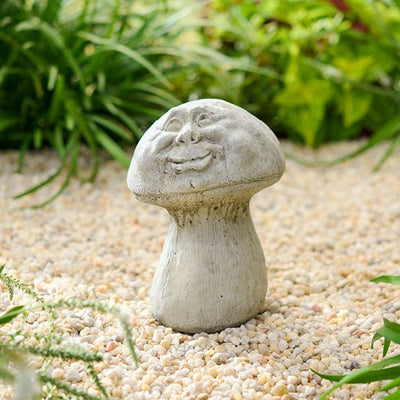Explore the Hidden Beauty of the Privacy Berm in Winter
Video Transcript
Hey friends, welcome to Gardening with Creekside. Today, we are going to take a winter garden tour of the privacy berm behind me. If you have been a faithful watcher of Gardening with Creekside for the last year, you have seen this space develop, grow, and just absolutely thrive. If you are new to Gardening with Creekside, I want to give you a little bit of history, tell you why we created this space, and the whole bit of back history on it and why we did what we did and how we did it.
It is a privacy berm, raised, and it's a little bit hard to tell with the elevation. What we wanted to do was create a beautiful, natural kind of a privacy screen between our house, which you see on the left, and then the retail Garden Center, which is over here on the right. So, what we did is create this bed. This whole entire space before was just one big field. It went all the way from the road that goes to the nursery, all the way up to the flower bed that has the crepe myrtles and the daylilies closer to the house. It was just one big giant grassy field. We came in and created this space that has natural curves. It is obviously going to be wider at the top than at the bottom because we wanted to incorporate the two maple trees into the berm here. That's why we had to go as wide as we did to have those maple trees in there. Then, as it goes down closer to the creek, it does kind of ebb and flow and has some curves to it, getting a little skinnier down there towards the creekside. We put the split rail fence in to divide that, so we don't have any visitors walking through the flower bed and across into the houseside. We welcome and encourage our guests here to come and explore the nursery side of the Privacy berm. On the house side, we just ask that you stay on this side of the fence, and you can look over, glance over, and then use these videos to see the house side.
We planted this, and it has just now hit its one-year mark. We started the construction of the berm because we had to, of course, bring in tons of soil to create the bed. That was in late October, and we did not start planting the trees and shrubs until November. So, we planted last November, November of 2022, through the beginning/mid of December. We planted the trees and the shrubs then spent all winter right here, and everybody did great. We did lose a few of the shrubs due to the Arctic blast that came in last year right before Christmas. Those were some of the more heat-loving plants that had not yet had time to get established, like some loropetalum. So, we did lose those. But then come this spring, what we did is we put in tons and tons of beautiful perennials that our friends from Walter's Gardens sent us. So, on this side, the nursery side of the berm, it is only trees, shrubs, and perennials. There are no annuals on this side of the berm. On the house side, my husband does enjoy loads of color, and we have nice big open spaces for tons of gorgeous annual color. If you will remember what we did this past summer, we loaded it up with Supertunias. So, we had these beautiful mass plantings of Supertunias on the house side that just gave us massive color all season long.
What we're going to do is just kind of walk through and give you an update to show you what this space looks like in winter. We are officially in winter now, and we have had very cold nights. We've gotten down to 19 degrees, 20 degrees multiple times. So, everybody is in their winter dormancy. Just kind of take you along for the ride. Up here at the top of the berm, on the nursery side, we do still have a good bit of leaves in here that have fallen either from the maple tree, and we have these beautiful oaks, tons of oaks right here, on the other side of the driveway. So, some of those have blown in, and I'm just kind of leaving them. My sedums, I am leaving the heads now for some interest. I will come in in late winter, early spring, and just snip those off. As with the Russian sage, I like to leave my Russian sage alone until the heat begins to come back because these are plants that just love the heat. I have found for me that they do better if I just leave them alone. Then, I can trim them really far down come late winter, early spring, and really, almost more like early spring. Then, I'll just cut them down to the ground. In the back, you will see that Mimi and I came in here two weeks ago, a week and a half ago, and just kind of cleaned up some of the perennials. We had the agastache, the peony, amsonia, exactly where Brena is standing. So, all of that has been cut down to the ground. I do leave my perennial grasses for the winter. That way, I have really pretty interest, gives me some height, it gives me some structure, and I leave these alone. So, I have them planted on both sides of the berm. This is the Niagara Falls from Proven Winners. As you can see, it's a very upright grass, really nice winter interest. So, what will happen is probably end of February, I will come, and I will gather up this whole mound right here, gather it up, and then just shear, give it a flat top down to the bottom. You want to cut your perennial grasses before they begin to send up new fresh growth. That way, you can, when you cut out all that old growth, then the new growth has plenty of room to come up and shine. You can trim it after you start to get some new growth. It is harder, and then when you cut that new growth, you're probably going to have some brown tips on the edges. So, optimally, you want to prune it before any new growth starts to come up. In a perfect world, that's when you do it. But as we all know, life happens, and so just do it when you can. Some people don't like the perennial grasses in the winter, and they go ahead and cut them now. So, that really is just a personal preference.
You will see throughout this flower bed that I already have my daffodils starting to come up. I have tons of daffodils in this berm. I just absolutely love them, and they are starting to come up. Y'all, just leave them alone. They'll take care of themselves. It obviously is way too early for them to begin blooming. Leave them alone. Don't worry about them. They will be just fine. Here we have Platinum Beauty. There are three of these. These are from Southern Living, and they are an evergreen, for lack of a better word, a grass. Y'all, these are gorgeous plants. I have them surrounding my thunderhead. Yes, I have a thunderhead, and I have a thunder cloud. This is the thunderhead, this is that black pine, black Japanese Pine. So, with that Platinum Beauty putting around the three of those around there, it just really accents, really nice winter interest, and lots of fun in there for sure.
I have my hydrangeas. These are panicle hydrangeas. Back there, it is the Quick Fire Fab. You can see that I've already given them a little bit of a haircut because I had time. Like I said, Mimi and I were in this space, and we are going to be hosting one of our employee's weddings in the end of May. May is going to be a crazy time. So, we were in here. We had the time. We went ahead and gave them a little bit of a snip. They'll be fine. It is all good. If you're in the garden, and you have the time to do it, and you know that your spring or whatever time ahead of you is going to be challenging and difficult, go ahead and get what you can get done. Right? Every little bit helps and makes a difference.
One thing that I am absolutely not going to touch right now is my cotoneasters. So, here we have three really beautiful, healthy plants. This is the Beyond Pink Cotton. Cotton is a beautiful heat-loving shrub that really performs its best, like it really shows off in the late summer, early fall. This is like my Russian sage. I am not going to touch it until the heat begins to return. So, that could even be March, mid-March, depends on it. Then, at that time, you're going to give it a really good, strong haircut. So, right now, just leave your cotton alone, and they'll be fine. Right? It still gives you some structure in there. For your daylilies, we just cleaned them up. You'll see the little green tips. They have not been deadheaded. They haven't been fried all the way back, I should say. So, we just cleaned them up a little bit. That is all of Blood Sweat and Tears, a new daylily from Proven Winners. So, you can see where they have that swoosh that goes all the way. Cannot wait to see them in all of their glory when they are blooming. Now, what you cannot see is back here behind the Blood Sweat and Tears, there are three Summerific Holy Grail hibiscus. We went ahead and trim them on down to the ground as well.
Proven Winterers recommends that you not prune them until you're coming out of winter and you're going into spring. I've been growing summer rics for years and years and years, and before I saw that information, I, for years, had just cut them down to the ground just like this because I did not like the sticks in my garden, right? I just was like, "Ugh, I just want to get rid of those," so I just cut them down to the ground because it's a perennial hibiscus, and they will come back from brand new growth. So they're not going to come, no growth is going to come off of last year's stems. Proven Winners recommends waiting in case, you know, water gets down in the stems, and they could possibly rot. I've never had an issue with that in my North Carolina Zone 8 Garden, but you can make that decision for yourself. So, um, proceed with caution, however, that you like to do that.
I have three W jillas here; this is Veno Verde, and they are complete sticks. They look just almost very much like a hydrangea right now. Villas, of course, are deciduous. Veno Verde is really fun because it is a bicolor with green and almost near-black foliage. They will bloom, and they bloom on old growth. So I do not want to cut these right now because if I do, any chance of me having flowers is going to be completely gone. If I want to prune these, it would be after they bloom, and I probably would come in and just shape them up a little bit because you can see like this one is probably, you know, it's a little uneven. So I'll come in and just give it a nice gentle shape after it blooms, and then there we go.
Daisy M, no excuse me, these are spune silk, look at those beautiful Shasta daisies, look at that gorgeous green growth. This is completely normal for the Shasta daisies here in North Carolina to keep this nice beautiful mound. Whereas your EAS, yeah, not so much. This is the fuchsia; it's bright completely dyed back. I have those in multiple clumps through here and then as throughout the garden, I repeat things. So we have more of the Niagara Falls grass. Here we have manard in the back; we just kind of cleaned it up a little bit. Monarda will be very similar to the Shasta daisy as far as you will be able to see some of the foliage throughout the winter, completely normal. And then the chartreuse on the loose NEPA, bright chartreuse color, does it look spectacular right now? No, but is it giving me some color interest? It sure is, and I'm very happy with it. So I am going to leave it alone. When I am going into spring, I will come back in and give it a nice trim of a haircut.
The sensation honeysuckle, I have two of these on the fence. I have it just a couple of panels down, but you've got some nice structure here. I will have to come in and help tie it up just a little bit because while it does climb and twine, it's not going to be one that is an aggressive twiner. It's not an aggressive twiner, is what I know I'm making words up, but y'all understand what I mean. And the fact of that, you really have to kind of attach it some and then kind of tell it where to go. Otherwise, if you don't, I have found in my garden it'll just lay on the ground and just act like a ground cover. So I have to help it climb and attach it a little bit. Very similar to like a climbing rose if you have climbing roses where you have to help attach it, and then it will go on and do its thing. But man, beautiful traditional honeysuckle flowers on it. Love that one, and it brings me some interest on the fence right. So it's something that's attached to the fence and it's climbing on there. If you need to prune it, you can do that after it blooms. I have not pruned it at all, and it's doing just fine.
One of the plants that I have been so super excited about is this brand, nope, sorry, Sweet Talker VI burum. The Sweet Talker is a beautiful Evergreen viburnum that is definitely more of a southern plant, and it will get nice and tall. It is, as you can tell, it has more of an upright habit than wide, y'all. And I have another one just right down on the other side of the plum tree. This Sweet Talker was one of those plants that got completely fried and defoliated from last year's Arctic blast. North is just this direction, so that wind, if you remember that wind was so intense and so sustained, and it just came and it just pummeled this viburnum. They were new; they had only been in the ground, you know what, at the maximum two months and much, much smaller than they are right now, completely lost every single leaf on the plant. And I was like, "Oh my gosh, they're gone." But immediately, like within almost like two weeks, they started pushing out new growth. So I felt like I was safe. This is how much they have grown in this growing season. Is this not amazing? I love this viburnum. Sweet Talker gets its name because it'll do early flowers, these little sweet pink little flowers, obviously has a delicious fragrance to it. So that's why it's called Sweet Talker. Little lime punches right through here have been trimmed. Now, this is the Daisy May. You can see how nice and beautiful those mounds are. Just leaving them alone.
This whole area right here are the Pugster Pinker butterfly bushes. And yes, they look rough; they're butterfly bushes at the end of the year. So you can see though that they do have, they will, and they will keep this green foliage that they have right now. They will keep that basically all winter long. I've had numerous people ask me, you know, when do I prune my butterfly bushes, how do I do that? I have found from personal experience, also what Proven Winners suggest is you really don't want to prune your butterfly bushes until you begin to see new growth in the spring. I have in the past cut them, you know, um, a little too early, and then inevitably we get that late Frost um in the springtime, that late hard freeze, and it just set them back even more. So I'm going to leave mine alone until I begin to see some new growth popping out. So that could be sometime in April at that point because your butterfly bushes all bloom on new growth. At that point, you can, depends on the butterfly bush, purrs are only going to be like a 3X3. I will probably still take it back by, you know, like somewhere between that 1/3 and 1/2 size of the plant and give them a nice hard prune because, man, they will come back with a vengeance and be happy and beautiful. Um, but you can see like all of that black essentially on the FL on the shrub itself were all flowers. So all those little black things are the old spent flowers and just absolutely um covered in beautiful flowers.
I do have the purple plum; this is the uh Thundercloud purple plum, and it is still holding on, y'all, to some leaves. This tree has held on to more leaves, um, that I believe any tree that I have in my entire Garden. Of course, it keeps that beautiful nice dark dark foliage, um, those nice beautiful dark leaves it keeps this color all year. So when the leaves come out, this is the color, and it is a full sun tree, and it looks like when it blooms in the spring, it very much reminds you of a cherry tree. So it's nice because we have cherry trees on the other side that I'll show you in just a minute. So we have that beautiful spring interest with the flowers, and then of course that nice dark foliage throughout the entire growing season. And really, I mean, like you can still see it has leaves on it at the end of the year. It's just crazy. I love it. And we have some orange pillar barberries around the purple plum, and they are doing well. Just it brings me some fun pop of color. There's three of them in there, and very, very nice, nice different interest in there. And, um, yeah. So love that uprightness of that orange pillar. And then we start to repeat again, right? So we have that Sweet Talker viburnum. We have three more of the Niagara Falls. We have still have dayes here, but they are different dayes. This is, I want to say, King of Ages, I'm losing my tag on here, um, Agaki, we have the um, Holy Grail again. So we have three Holy Grails in here. Um, so I, I kind of take those plants and then I just repeat them all throughout. Yes, there are things that are like bare spots because those plants have gone, um, dormant, and that does not bother me one iota.
Now one of the plants that again absolutely blew me away because I was not sure how it was going to do in my garden was this Minecraft gold smoke bush. Y'all, can we just talk about that? It is every bit of close to 5T now. Yes, it is, you know, it is sticks right now, there's one, two little leaves barely hanging on, but 5T worth of growth right here. When I planted this last year, it was a very small, I want to even say it may have been a one-gallon. I'd have to go back and look, no bigger than a three-gallon, right? This thing absolutely thrives right here. That Winecraft gold is bright yellow chartreuse foliage on it, nice and big. Obviously has more of an upright habit to it. I have the Holy Grails behind it, so they just, I mean, they both just pop off of each other. But the reason that I put the Winecraft gold down here is because it is a full sun plant, so it needs that minimum of six hours to get that beautiful color to it. But because we are in North Carolina, um, and with our heat and humidity, I wanted to give it a bit of a break in, in the afternoon. And so in this corner of the bed, it gets the shade first. So it probably doesn't start to get shade until about like 3:00 in the afternoon, but that seems to be enough. And it is absolutely thriving. Love this shrub so much.
And then as we, uh, come down here to the bottom, it is, we have those day Liles, it's Blazing Glory. So I found my tag, so we have Blazing Glory down here. And that was, um, a little bit of Blazing Glory up here, which is a nice bright yellow with kind of, um, burgundy edges on it, really nice. And then of course, our North Pole arborvitaes. These North Poles, we put them down here on the end because I wanted to create a, um, anchor point because as you can see, I mean, we're on pretty, this is a pretty good slope right here. And to give the weight on this end of the flower bed. So we have two, four, six, we have seven of these North Poles. They were 15 gallons when we planted them. I have done nothing to them, uh, this bed is on irrigation. We would run it about once a week for about 45 minutes, and these guys are just doing great. They'll get to be in that 10 to 15 ft tall and about three to five wide. So the idea here is, is that they will get nice and tall and they will create like a solid screen right here. Um, because also when we're sitting on the porch way over there, uh, that will give us a little bit of privacy from the nursery. So these guys are doing great. I haven't had to prune them. I'm just leaving them alone, and I am quite happy with how they are doing in the garden. Um, can you tell that this poor dog has been in the house cooped up after holidays and then we've had a bunch of rain so she is just so excited to be outside and just running like a mad woman around here.
Now, here we are on the house side of the Privacy Burn. This is the area where you will notice a big, empty space with seemingly nothing planted in it. This is where the flower power comes in, my friend. So, we're going to start down here at the bottom, and then we'll work our way up to the top.
Down here, we have the Golden Oakland Holly. This is a holly tree from our friends at the Southern Living Plant Collection. I love this tree because it has really bright foliage. Now, winter sun and summer sun are quite different. It has great color for the winter, but it's starting to get a little bit more green than it typically is in the summertime due to the way the sun sets. This tree doesn't get much winter sun, but in the summertime, it gets lots and turns a beautiful chartreuse green.
This past summer, we had tons of Wicked Witch Colus in here, including the Senorita Blanca Cleoma. However, I won't be putting the colus back in this area because of some brown spots on my North Poles. I had a colus growing into one of my North Poles, blocking the sun, resulting in some dead foliage. If I plant anything here, it will be lower and less aggressive than the Wicked Witch.
Moving on, we have some Camellias, specifically the October Magic Ruby Camellias from the Southern Living Plant Collection. These Camellias bloom in the fall, and they have performed great in full sun.
Next, we have some Cleitus in this bed. These are completely herbaceous Claus, so I can cut them down to the ground, and they will come back with new growth and bloom. However, I noticed a weed growing in here that doesn't belong, so we'll take that out.
Between the Camellias, we have a puffer fish hydrangea. Puffer fish hydrangeas have large creamy white panicle blooms. We haven't trimmed it yet, and it got a bit too friendly with the Cleitus, but we'll make sure it shines.
Annuals are great as temporary fillers while waiting for trees, shrubs, and perennials to grow and develop. More plants mean less room for weeds.
In the flower bed directly behind Brena, we have a Pink Cascade 2 butterfly bush. It had Clei around it, which affected its shape. It will get a hard prune this year, and I'm not worried about it. It will fill in nicely.
Moving on to the big empty space, we have two Yoshino cherry trees, ornamental cherry trees with beautiful spring flowers. Surrounding them are Sprinter boxwoods, which we plan to rearrange due to their current placement not working as expected. We planted thousands of tulip bulbs in this space, and it will be stunning in spring.
Behind Brena, there are three holy Grails, and this pattern repeats on the other side of the fence. The holy Grails will receive plenty of sun.
In the middle of the Camellias, there is a puffer fish hydrangea, known for its large creamy white blooms. We'll ensure it shines.
This is a favorite butterfly bush, the Pink Cascade 2. It had Clei nearby, affecting its shape, but it will fill in this year. The tulips will bloom, and we'll rearrange the boxwoods.
The remaining space is home to daffodils, Jonquils, Niagara Falls grasses, Russian sage, and a Stellar Ruby Magnolia from Southern Living. It's an evergreen Magnolia with some winter damage, but it's doing well.
Gardens are never finished; they're constantly changing and evolving. Losing plants opens up opportunities for new possibilities. That's the fun of gardening, creating a space you enjoy.
This side of the house is more bare in the winter months, but that's okay since we spend most of our time on the front porch during spring, summer, and fall when the Privacy Burn thrives. In the end, we look forward to what next year holds for this garden. We appreciate your support, and we'll see you in the next video. Bye, friends!
Recent Posts
-
The Best Rabbit Resistant Plants For Your Garden
-
Creating Colorful Winter Beds in the Signature Garden
-
Explore the Hidden Beauty of the Privacy Berm in Winter
-
Proven Winners Signature Garden: What Lies Ahead in 2024?
-
Exciting New Preparations for 2024
-
Ask Jenny: How To Get Beautiful Camellia Blooms
-
Planting a Mixed Screen At the Signature Garden
-
My Top 10 All-Time Favorite Proven Winner Annuals
Related Articles
